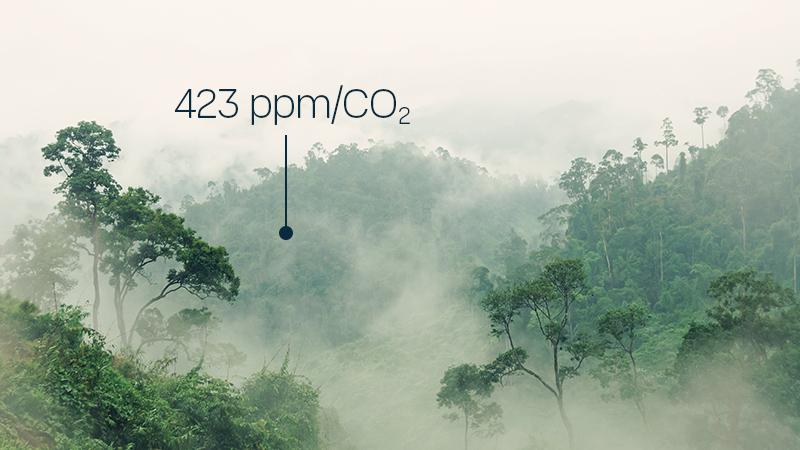Breaking new ground with greenhouse gas measurements
Extreme weather events, from brutal heatwaves to record-breaking storms, are no longer rare anomalies. They are the new normal. The World Economic Forum ranks severe weather as the number one threat to humanity in the next decade.
The primary culprit? Greenhouse gas (GHG) emissions. To secure a sustainable future, we must reliably measure greenhouse gas sinks and sources across land use, energy systems and industrial processes.
Science shows that our planet is a patient in critical condition. We need to measure and monitor its vital systems to ensure our treatment is effective.
Climate action with real-time greenhouse gas emission insights
Imagine a world where we can measure not just the weather, but our impact on the planet in real time.
Carbon dioxide (CO₂) alone accounts for 60-70% of the global warming effect from human activities. However, policymakers rely on fragmented, often inconsistent GHG data to make critical decisions.
For nearly 30 years, Vaisala’s pioneering expertise in high-precision carbon dioxide measurements has supported industries in monitoring and reducing their emissions.
Now, we aim to bridge this critical data gap by expanding GHG measurements to our customers in the weather and environmental sectors. This initiative will help our customers, including cities, universities, and meteorological services, to map emissions more effectively on both local and global levels.
Our efforts align with the recently updated WMO's Global Greenhouse Gas Watch (G3W) initiative, which seeks to establish a comprehensive, globally coordinated system for monitoring greenhouse gases, and with the World Economic Forum Initiative - Net Zero Carbon Cities, aiding efforts to track and reduce emissions.
University of Berkeley leading the way
A prime example of GHG measurements driving change is the BEACO₂N project at the University of Berkeley in California.
This initiative provides near real-time, street-level mapping of CO₂ and pollutant concentrations across the San Francisco Bay Area. Using a network of sensors called “nodes” (with Vaisala Carbon Dioxide Probe GMP343), placed approximately one mile apart, the system delivers highly detailed emission data.
In April 2024, researchers reported a 1.8% annual drop in Bay Area CO₂ emissions (2018–2022), citing increased adoption of electric and fuel-efficient vehicles, supported by the California Department of Motor Vehicles data. (Source: U.S. Greenhouse Gas Center)
By understanding local emissions with precision, cities and policymakers can evaluate their policies, implement more effective strategies to combat climate change and improve public health.
Continuing to take every measure for the planet
The future is not something we predict, but something we create together. By expanding our capabilities in greenhouse gas measurements, we are strengthening our commitment to building a more sustainable future. Let’s continue the discussion and commitment to climate action – together and with every measure.


